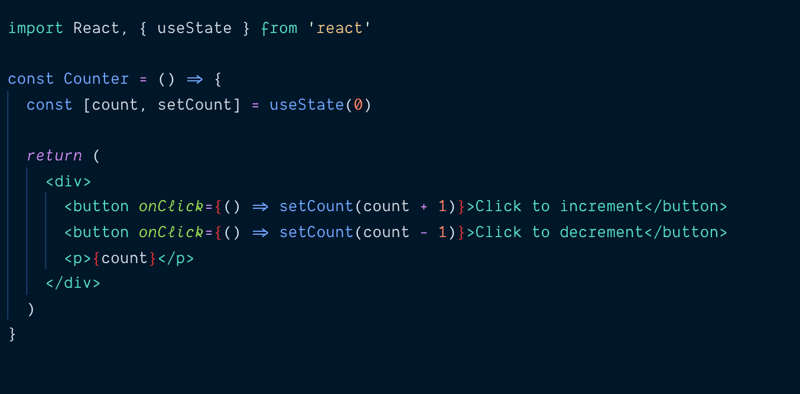useState is not always the correct answer❌
Jul 19, 2024 pm 03:37 PMIn React, we have two ways to manage the component’s state — useState is not always the correct answer❌ and useReducer. The second is less popular because it is meant for more complex objects in the state and honestly looks too tricky at first glance for new programmers, but it is not.
However, useState is not always the correct answer❌ looks very simple and understandable, so new programmers often use it more than is required.

Depending on user interactions, it is intended to manage the state for redrawing components. If you want to remember something without rendering it, you probably shouldn’t put it in the state. useRef would be the best option.
You don‘t need useState is not always the correct answer❌ if:
You want to remember some values during re-renders without showing them to the user. You already have data in the state, or you receive it through props but need to transform it; you don’t need to keep that new value in the new useState is not always the correct answer❌ object, create a new variable and operate with that without triggering useless re-renders.
You need to keep the value in a state if:
You want to redraw the component when the value changes; the most popular examples are showing/hiding panels, spinners, error messages, and modifying arrays.
Simplify your code from this:
import React, { useState is not always the correct answer❌, useEffect } from 'react';
const MyComponent = (props) => {
const [name, setName] = useState is not always the correct answer❌('name');
const { description, index } = props;
const [fullName, setFullName] = useState is not always the correct answer❌('');
useEffect(() => {
setFullName(`${name} - ${description}`);
}, [name, description]);
return (
<div>
<h1 id="fullName">{fullName}</h1>
<input type="text" value="{name}" onchange="{(e)"> setName(e.target.value)}
placeholder="Enter name"
/>
<p>{description}</p>
</div>
);
};
export default MyComponent;
This code snippet defines a React component that initializes name and fullName states, and uses the useEffect hook to update fullName whenever name or description changes. It also includes an input field to update the name state and displays the fullName and description.
This approach gives you useless re-renders and unnecessary usage of
useEffect.When the name or description changes and React re-renders the component,React will check if there is functionality that depends on these values. useEffect will be triggered when the name or description changes,creating a new re-render.
To this
import React, { useState is not always the correct answer❌ } from 'react';
const MyComponent = (props) => {
const [name, setName] = useState is not always the correct answer❌('');
const { description, index } = props;
const nameWithDescription = `${name} - ${description}`;
return (
<div>
<h1 id="nameWithDescription">{nameWithDescription}</h1>
<input type="text" value="{name}" onchange="{(e)"> setName(e.target.value)}
placeholder="Enter name"
/>
<p>{description}</p>
</div>
);
};
export default MyComponent;
In this code snippet, nameWithDescription is calculated directly from name and description without the need for useEffect. The name state is initialized with an empty string. The nameWithDescription is updated automatically whenever name or description changes due to React's re-rendering mechanism.
we can use React default behaviour and get the correct value when the name or descriptions are changed without triggering one more re-render.
The above is the detailed content of useState is not always the correct answer❌. For more information, please follow other related articles on the PHP Chinese website!

Hot Article

Hot tools Tags

Hot Article

Hot Article Tags

Notepad++7.3.1
Easy-to-use and free code editor

SublimeText3 Chinese version
Chinese version, very easy to use

Zend Studio 13.0.1
Powerful PHP integrated development environment

Dreamweaver CS6
Visual web development tools

SublimeText3 Mac version
God-level code editing software (SublimeText3)

Hot Topics
 Replace String Characters in JavaScript
Mar 11, 2025 am 12:07 AM
Replace String Characters in JavaScript
Mar 11, 2025 am 12:07 AM
Replace String Characters in JavaScript
 Custom Google Search API Setup Tutorial
Mar 04, 2025 am 01:06 AM
Custom Google Search API Setup Tutorial
Mar 04, 2025 am 01:06 AM
Custom Google Search API Setup Tutorial
 8 Stunning jQuery Page Layout Plugins
Mar 06, 2025 am 12:48 AM
8 Stunning jQuery Page Layout Plugins
Mar 06, 2025 am 12:48 AM
8 Stunning jQuery Page Layout Plugins












